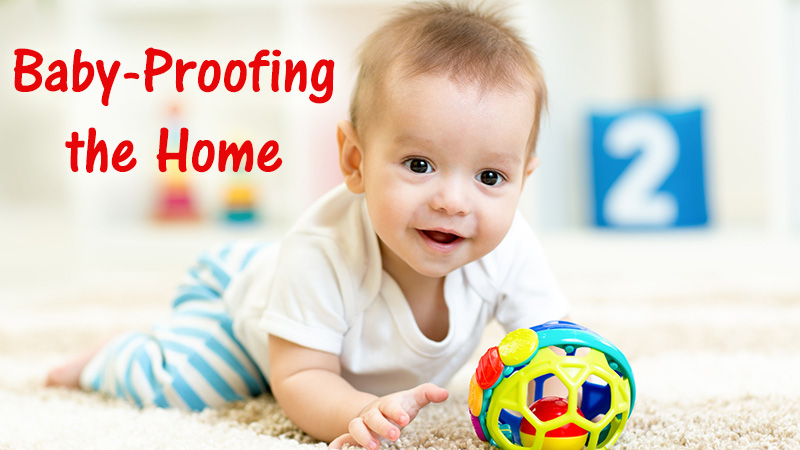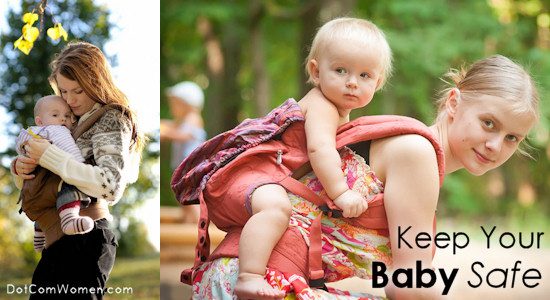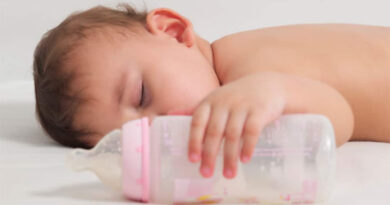Baby-Proofing the Home
As parents, we’re naturally concerned about the well-being and happiness of our children, especially when they’re at an age when their curiosity of the world around them could get the better of them. We want our kids to explore, especially around the house, but we want to make sure they can do so without any unexpected mishaps. Baby-proofing the home is the ideal way to protect your child, ensuring their happiness and safety.

By baby-proofing your home you’re providing a safer and healthier environment for your child to learn and grow in, so it’s truly worth the investment of money, energy, and time. But before you start wrapping everything in bubble-wrap, consider these basic steps first and see how it goes.
Baby-Proofing, the Home, Step by Step
The first place to start your baby proofing is, naturally, where your child is likely to spend much of their time. Their bedroom and the crib. Further, until they reach several months of age, the chances are that your baby will spend more time in their crib than anywhere else within the nursery.
Keep the crib clear and secure
Many toddler suppliers will try to sell you all sorts of redundant products to help your baby sleep. Frequently, what they’re trying to sell you is the idea that a product can magically keep your child asleep, and that just doesn’t happen. Until your baby develops a regular sleeping cycle, their feeding schedule will tend to dictate when they sleep and when they wake.
In the meantime, any other clutter in the crib is just something that makes it even more cramped and uncomfortable. All your baby really needs is a comfortable and breathable crib mattress, and a blanket. Anything else is unnecessary, and could even become a hazard to their sleep.
Cover corners and sharp edges
A lot of furniture found in the average household will have sharp corners. Even worse, they tend to be at the perfect head height for a toddler. You can protect your kids from running or falling onto these corners by covering them with protective padding, such as anAwesome Choice 12-Piece Cushion Furniture Guard. These present a protective rubber barrier between baby’s head and the corner, protecting them from little mishaps.
Secure furniture
As your child gets moving, they’ll start to grab hold of things, often out of curiosity but also to help keep themselves steady while trying to stand. Infants who are just learning how to walk will clutch hold of nearby furniture to stop themselves from toppling over. For this reason, you’ll want to make sure that they can’t grab onto anything that isn’t stable.
Look for furniture that is small and light enough to be easily moved or knocked over. Prime suspects include bookcases, TVs, drawers and smaller cabinets. You can secure these more readily to the walls through the use of straps, bands, and additional screws. Drawers, meanwhile, can be prevented from use as impromptu climbing frames by fitting them withmagnetic locks.
Anything with loose hanging cables or tassels should also be secured. Ensure that wires from lamps or TV sets are tucked away where they can’t be grabbed, or else unplug and remove devices entirely when they’re not being used.
Cover Electrical Sockets
Kids have an innate fascination with electrical outlets, and will happily stick their fingers and other objects inside. This can easily be prevented by fittingplug socket covers, which are fortunately very cheap and easy to get hold of. Most home improvement and electrical stores will stock them.
Child gates
These nifty little objects fit snugly in doorways and corridors, allowing you to keep your child contained to a specific room or set of rooms. This is a great way of ensuring that they can’t get to places they shouldn’t be, as well as making sure you always know where they are. They’re only effective until they hit four years or so of age, after which they’ll probably figure out how to open them themselves.
Equally, though, by the time they hit that age they’ve probably earned a degree of independence within the household anyway, so the point is moot.
Baby-proof the bathroom
Baby-proofing the bathroom is extremely important. Make sure to keep all bottles and containers out of reach of your kids. Locking them away in a medicine cabinet or an elevated cupboard is a good step, and you can rest assured knowing that they’re somewhere safe. For use in the bathroom, lay down a slip-proof mat within the tub so that your child has something secure to stand up on.
You may want to consider a toilet lock as well so that the lid is only opened when you want it to be opened. Toilets tend to be overlooked as a drowning hazard in the home.
Finger guards
Finger guards are another great way to baby-proof your home. Placingfinger guards on your doors will help prevent finger trapping accidents by totally covering the gap that is created on the hinge side of a door when it is in the open position. The ones in the link fit snugly on the edge of the door, so you don’t need any glue or nails. Made of a soft rubber, they will provide a safe gap that will protect slim fingers from being caught.
You may need to tweak certain tips given depending on your house and your child. Every child and household are unique, and you should always keep in mind their perks and needs when considering baby-proofing strategies. This will give you a more comfortable layer of protection, and lead to a happier, safer household for you and your family.
Check out more tips from Newton Baby in their blog.


